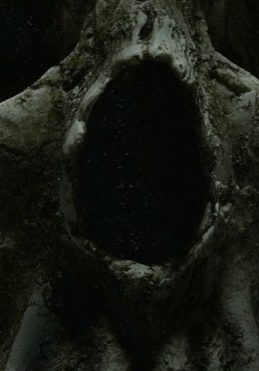Unearthing Fear: “The Pyramid”
“The curse is real!” This ominous warning sets the tone for Gregory Levasseur’s 2014 horror film, “The Pyramid”, where a team of archaeologists uncovers more than they bargained for. At its core, the movie presents a gripping tale of discovery gone wrong, as the team ventures into a newly-found pyramid only to find themselves lost in its dark, maze-like interior, stalked by an unseen force. Despite a premise ripe with potential, “The Pyramid” attempts to blend found-footage aesthetics with traditional filming, exploring ancient curses and claustrophobic terror.
Eerie Constructs: Atmosphere and Suspense
“The Pyramid” draws its horror from a blend of suspense and a relentless sense of foreboding. As the characters delve deeper into the ancient structure, the film relies on claustrophobic confines and the looming dread of history’s menacing secrets to unsettle viewers. The suspense is crafted through a series of escalating threats, from oxygen levels to collapsing floors, creating a race against time that adds urgency to the characters’ plight.
Shadows of the Ancient: Cinematography and Visuals
The movie’s cinematography swings between found-footage shakiness and more traditional, stable shots, an approach that aims for immersion but sometimes feels inconsistent. The lighting often leans into the sepia and torchlit hues of sandstone, which, along with cramped camera angles, amplifies the film’s claustrophobic effect. Special effects are a mixed bag, with certain sequences effectively conveying desperation and horror, while others falter, diminishing the film’s overall impact.
Screams and Silence: Soundtrack and Sound Effects
Sound design in “The Pyramid” plays a dual role in constructing its horror atmosphere. Eerie, subdued music sets a chilling undertone, while the intermittent silence ramps up tension. Cleverly used sound effects, such as the distant echoes of hieroglyph-covered chambers and the guttural growls of lurking dangers, provide a sensory enhancement to the terror. There are moments when these sounds park an instinctive fear, engaging the audience’s imagination in visualizing the horrors that lie in wait.
Flesh and Fear: Characters and Performance
The characters in “The Pyramid” show varying degrees of development, with some evoking genuine audience sympathy and others falling flat. The performances range from earnest to overwrought, sometimes capturing the disorientation and rising panic effectively, but occasionally they lack the subtlety needed to humanize the characters fully. The actors navigate through fear, disbelief, and desperation, but their efforts are somewhat undermined by occasional script shortcomings.
Archetype of Anubis: Genre and Mechanics
Within the horror genre, “The Pyramid” leans towards a blend of the supernatural and the psychological, stirring in elements of ancient mythology for good measure. The film subscribes to several genre conventions, including the trope of disturbing ancient tombs and the consequences that follow. The mechanics of fear rely on tried-and-tested formulas: jump scares and an ever-present, otherworldly threat, combined with the disturbing implication of historical authenticity.
Pharaoh’s Phobias: Themes and Societal Commentary
Apart from its primary objective to shock and scare, “The Pyramid” subtly touches on themes of hubris and the violation of sacred spaces. It poses a critique of human audacity and the reckless pursuit of knowledge, albeit without delving deep enough to leave a lasting impression or genuinely challenge viewers’ perspectives.
Horror in the Sands: Final Verdict
“The Pyramid” provides a venturesome foray into the horror genre but struggles with its identity between found-footage gimmicks and classic cinematic techniques. It is neither a groundbreaking horror film nor a regrettable misstep, residing somewhere in the spectral void between the two. It may not be genuinely innovative or profoundly unsettling, but it does hold some enjoyment for those who favor ancient curses and claustrophobic predicaments.
Horror fans, mainly those with an affinity for Egyptology and archaeological adventures gone awry, may find “The Pyramid” worth a watch. However, it may not resonate as much with viewers seeking character depth or a more polished cinematic experience.
When compared to films like “The Descent” for its underground terror or the “Indiana Jones” series for its tomb-raiding excitement (sans the horror), “The Pyramid” falls short of these benchmarks but could serve as a less intense primer into such themes.
In conclusion, while the movie has its high points, such as the atmosphere and the initial setup, the resultant film is a mixed bag of successes and shortcomings. Viewer discretion is advised due to some graphic content. For the casual viewer or someone new to horror, this might be an evening’s mild intrigue, but die-hard horror enthusiasts might want to explore deeper into the catacombs of the genre for a more satisfying scare.




